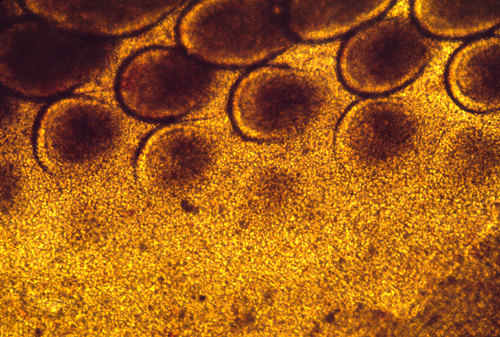Embryology - Biology 104, Spring 2006 - Albert Harris and Corey Johnson
LECTURE - March 22, 2006, by Albert Harris
Ectodermal derivatives I
-
Epidermis SKIN Somatic ectoderm
Dermis SKIN mesoderm, from dermatome of somites

Scales in teleost fish are mesodermal, and are essentially bones
The dermis is the leathery, mesodermal inner layer of the skin,
made of mesenchymal cells, and tightly-woven collagen protein
Tight aggregations of dermal mesenchymal cells (dermal papillae) control the locations where epidermal cells will differentiate to form hair, feathers, scales, or claws.

The rapidly growing bottom part of each hair, feather etc. are wrapped around their dermal papilla.
Stomodeum
ameloblasts are the cells that secrete the enamel (hard, brittle surface part) of teeth.
odontoblasts are the cells that produce the dentine part of teeth.
The oropharyngeal membrane is the boundary between endoderm and stomodeum (ectoderm)
A rare birth defect is failure of the oropharyngeal membrane to disappear
Placodes (in the head, forming nostrils, lens of eye, and the inner ear. The inner ear consists of the semicircular canals, the cochlea (or its equivalent) and the otoliths.
(also the lateral line organ, in fish and amphibians)
notice the importance of neuromast cells in detecting sound, gravity, rotation (in the different parts of the inner ear), and in the lateral line canals detecting water pressure differences.